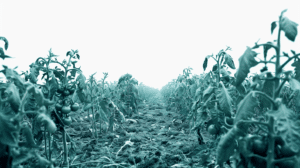In today’s conscientious consumer landscape, certifications like Rainforest Alliance or Organic have become not just a badge of honor but a necessity for food and beverage companies looking to demonstrate their commitment to sustainability and quality. However, obtaining these certifications can be a complex journey, requiring thorough understanding and adherence to stringent standards. Let’s go through the certification process step by step, helping companies embark on their certification journey with confidence.
- Understanding Certification Requirements:
The first step for any company aspiring for certification is to thoroughly understand the requirements set forth by the certifying body, whether it’s Rainforest Alliance, USDA Organic, or another recognized organization. These requirements typically cover various aspects such as environmental stewardship, social responsibility, and sustainable agricultural practices.
- Choosing the Right Technology:
Food and beverage companies should invest in robust software solutions specifically designed to facilitate certification management, documentation, and reporting. Look for features such as digital data capture, real-time monitoring of key performance indicators, digital process mangement and automated reporting functionalities.Advanced analytics tools can provide valuable insights into operational performance, identify areas for optimization, and help track progress towards certification goals. By leveraging technology, companies can not only ditch pen and paper methods but also enhance transparency, accuracy, and accountability throughout the certification process, ultimately leading to greater success and recognition within the industry.
- Assessment and Preparation:
Once familiar with the certification standards, companies should conduct a comprehensive assessment of their operations to identify areas where improvements or adjustments may be necessary to meet the criteria. This may involve evaluating sourcing practices, production methods, labor conditions, chemical usage, and more, depending on the specific certification requirements.
- Implementation of Sustainable Practices:
With a clear understanding of the standards and areas for improvement, companies should begin implementing sustainable practices across their supply chain and operations. This may include sourcing ingredients from certified suppliers, adopting organic farming methods, reducing carbon footprint, conserving water and energy, and promoting fair labor practices.
- Documentation and Record-Keeping:
Proper documentation is essential throughout the certification process to demonstrate compliance with the standards. Companies should maintain detailed records of their practices, including supplier certifications, production processes, chemical usage, waste management, and any relevant documentation pertaining to social responsibility initiatives.
- Third-Party Audits:
Certification bodies typically require companies to undergo third-party audits to verify compliance with the established standards. These audits may involve on-site inspections, interviews with employees, and thorough documentation review to ensure adherence to the certification requirements.
- Continuous Improvement:
Achieving certification is just the beginning. To maintain certification status, companies must commit to continuous improvement and ongoing compliance with the standards. This may involve regular audits, periodic reviews of practices and procedures, and staying informed about updates or changes to the certification standards.
- Promotion and Consumer Education:
Once certified, companies should leverage their achievement as a marketing tool to communicate their commitment to sustainability and quality to consumers. Educating consumers about the significance of certification and the positive impact of their purchasing decisions can further enhance the value of certification for the brand.
By following these steps and embracing a culture of continuous improvement, food and beverage companies can navigate the certification process successfully, reinforcing their reputation as responsible stewards of the environment and champions of ethical practices in the industry.








